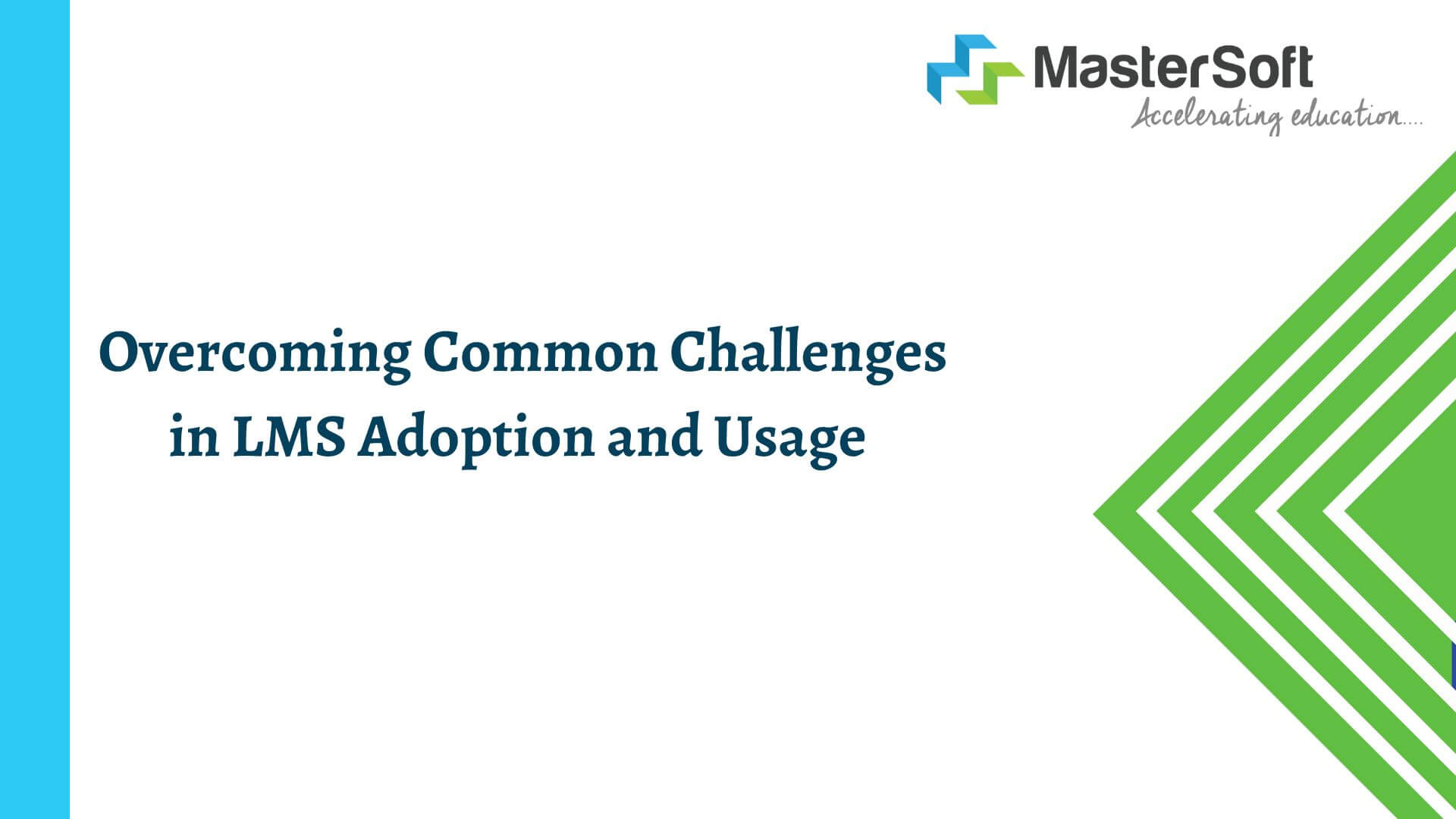Overcoming Common Challenges in LMS Adoption and Usage

Overcoming Common Challenges in LMS Adoption and Usage
In the rapidly evolving landscape of education and corporate training, Learning Management Systems (LMS) have emerged as indispensable tools for efficient content delivery, assessment, and tracking of learning progress. These platforms have gained significant traction worldwide, including in India, where the demand for effective e-learning solutions is on the rise. However, the successful adoption and usage of LMS come with their share of challenges. This article explores these challenges and provides insights into overcoming them, highlighting the best LMS software in India as examples.
Challenges in LMS Adoption and Usage
- Resistance to Change: One of the most common challenges faced during Learning Management Systems (LMS) adoption is resistance to change. Traditional teaching methods and training processes have deep-rooted familiarity, and educators and trainers may be reluctant to transition to digital platforms. This resistance can slow down the adoption process and hinder the realization of the benefits offered by LMS.
- Lack of Technical Proficiency: Some educators and learners might lack the technical skills required to effectively navigate and utilize the features of an LMS. This can lead to frustration and reduced engagement, as users struggle to understand the platform’s functionalities.
- Content Quality and Relevance: An LMS is only as effective as the content it delivers. Developing high-quality, engaging, and relevant digital content can be a challenge for educators and trainers, especially when transitioning from traditional methods.
- Integration with Existing Systems: Many educational institutions and organizations already have existing systems in place, such as student information systems or HR management tools. Integrating these systems with an LMS seamlessly is crucial for efficient data management and reporting.
- Limited Access to Technology: In India, where technology penetration is not uniform across regions, access to devices and stable internet connectivity can be a barrier to LMS adoption, particularly in rural and remote areas.
- Monitoring and Assessment: Effective monitoring of learners’ progress and timely assessment are essential components of any learning process. LMS should provide comprehensive tracking and assessment features that accurately reflect learners’ achievements.
Overcoming the Challenges
- Change Management and Training: To address resistance to change, it’s crucial to provide adequate training and support for educators and learners. Workshops, tutorials, and resources can help users become comfortable with the new platform. Highlight the benefits of using the LMS, such as enhanced collaboration, time efficiency, and access to a broader range of learning materials.
- User-Friendly Interface: LMS platforms should prioritize user-friendliness. Opt for LMS software with intuitive interfaces that require minimal technical expertise. Conduct usability testing to ensure ease of navigation and access to features.
- Content Development Strategy: Invest in content development that aligns with the learning objectives. Engage multimedia elements like videos, quizzes, and interactive assessments to enhance engagement. Collaborate with subject matter experts to ensure the content’s accuracy and relevance.
- Integration Capabilities: When selecting an LMS, opt for platforms that offer robust integration capabilities. The chosen LMS should seamlessly integrate with existing systems, allowing for easy data exchange and reducing redundancy.
- Offline Access: To address limited technology access, choose an LMS that offers offline capabilities. This enables learners in areas with intermittent internet connectivity to download content and engage with it offline.
- Comprehensive Analytics: Monitoring and assessment can be simplified through comprehensive analytics offered by advanced LMS platforms. These analytics provide insights into learners’ progress, allowing educators to tailor their teaching methods accordingly.
Best LMS Software in India
- MasterSoft: MasterSoft is a Best LMS Software in India that offers extensive customization options. It’s popular in India due to its flexibility and affordability. Moodle supports collaboration, interactive assessments, and a range of plugins to enhance its functionalities.
- Edmodo: Edmodo is a user-friendly LMS that focuses on enhancing communication between educators and learners. It’s particularly suitable for K-12 education in India, allowing teachers to create a virtual classroom environment.
- TalentLMS: For corporate training, TalentLMS offers a cloud-based solution that’s scalable and easy to use. It provides robust analytics, gamification features, and the ability to integrate with other enterprise systems.
- Google Classroom: Google Classroom is gaining popularity in Indian schools due to its integration with Google Workspace (formerly G Suite). It streamlines communication, content sharing, and assignment submission.
- Adobe Captivate Prime: This LMS is known for its powerful content creation tools and analytics. It’s suitable for both education and corporate training, offering features like gamification, social learning, and mobile compatibility.
Conclusion
The adoption and usage of Learning Management Systems in India bring transformative potential to education and training. While challenges like resistance to change, technical proficiency, and content quality exist, they can be effectively addressed through change management strategies, user-friendly interfaces, and robust content development. By selecting the right LMS software, such as Moodle, Edmodo, Talent LMS, Google Classroom, or Adobe Captivate Prime, institutions and organizations in India can overcome these challenges and unlock the full benefits of digital learning.



